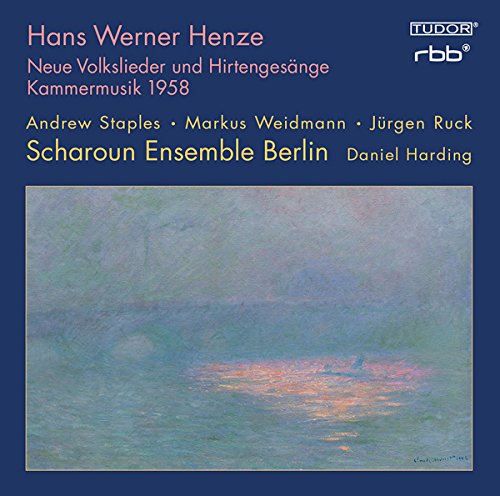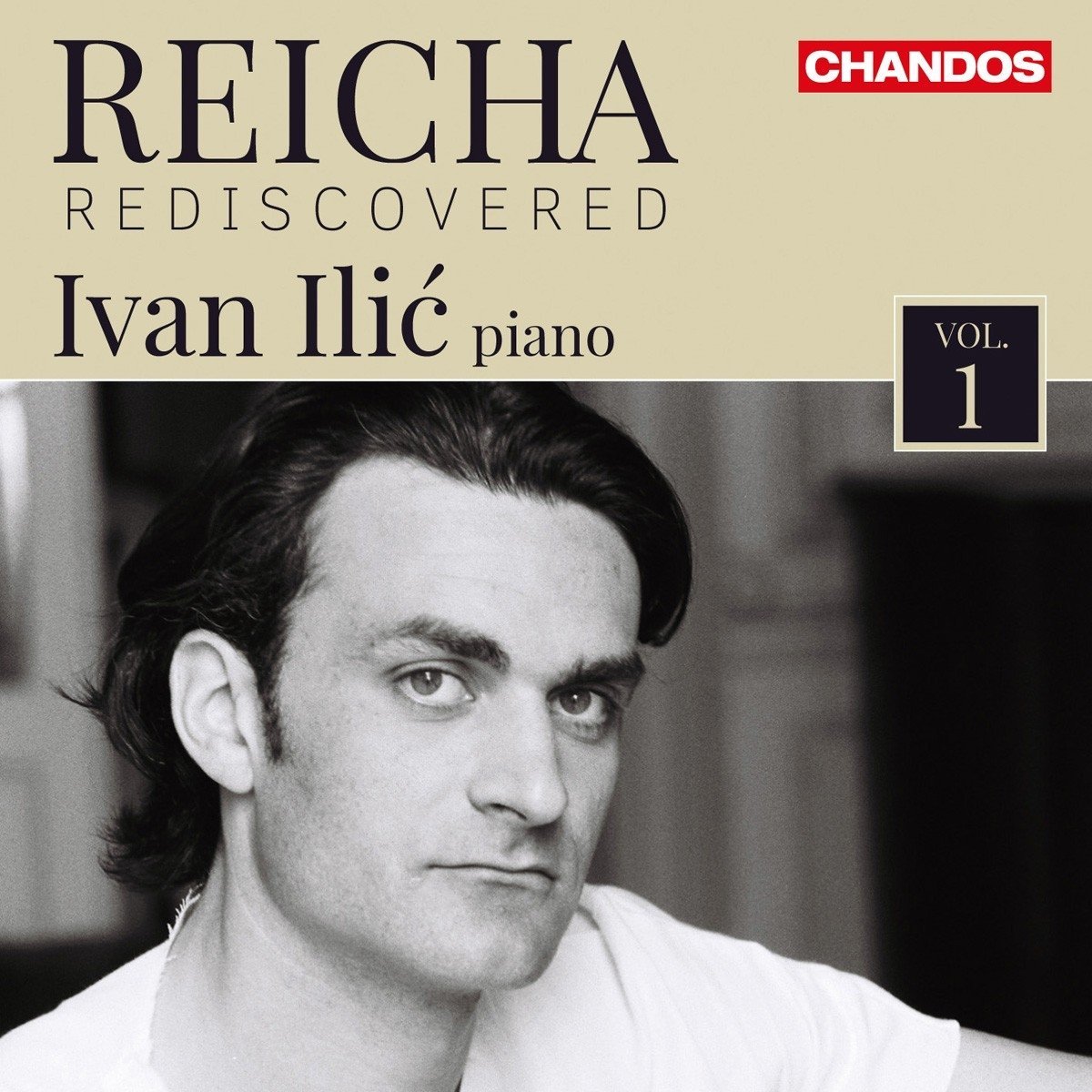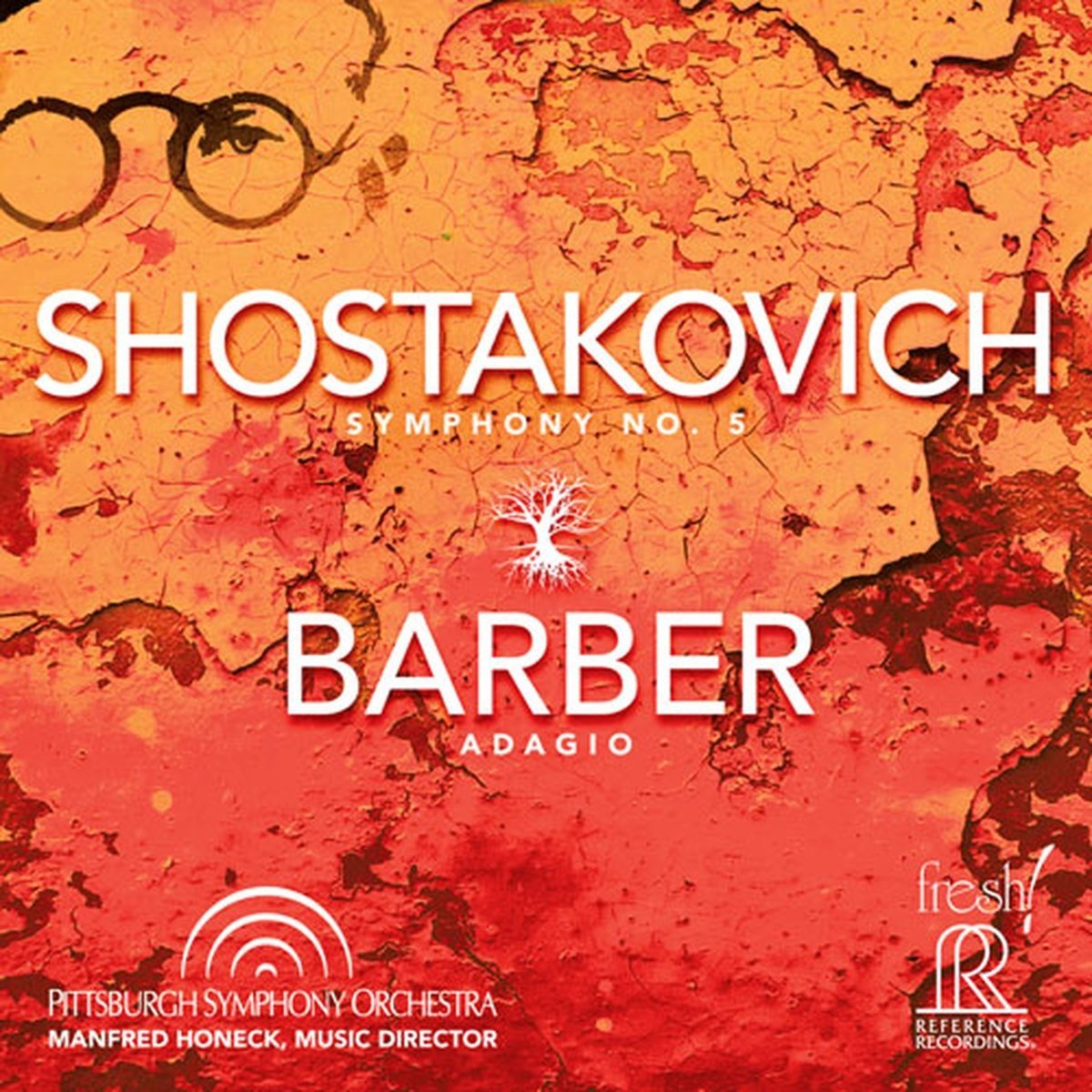Classical CDs Weekly: Henze, Reicha, Shostakovich | reviews, news & interviews
Classical CDs Weekly: Henze, Reicha, Shostakovich
Classical CDs Weekly: Henze, Reicha, Shostakovich
Quirky pianism from a Bohemian in Paris, an iconic 20th century symphony, plus music from a post-war German master

 Henze: Neue Volkslieder und Hirtengesänge, Kammermusik 1958 Scharoun Ensemble Berlin/Daniel Harding, with Andrew Staples (tenor), Markus Weidmann (bassoon) and Jürgen Ruck (guitar) (Tudor)
Henze: Neue Volkslieder und Hirtengesänge, Kammermusik 1958 Scharoun Ensemble Berlin/Daniel Harding, with Andrew Staples (tenor), Markus Weidmann (bassoon) and Jürgen Ruck (guitar) (Tudor)
Hans Werner Henze worked regularly with the Scharoun Ensemble Berlin from 1983 onwards, and this enchanting collection includes works performed at a memorial concert given after Henze’s death in 2012. One of the best routes into Henze’s music must be through Oliver Knussen’s mesmerising DG set of Undine, surely one of the great 20th century ballet scores. Or via the two works collected here, which will floor listeners expecting harsh post-war modernism. The Neue Volkslieder und Hirtengesänge were based on music written in the early 1980s for a community production in Styria, Austria of an updated retelling of the Oedipus legend. A decade later, Henze reorganised and rescored some of the material for bassoon, guitar and string trio, the end result a ravishing 14-minute sequence of "new folk songs and pastorals", the music aiming to capture “something of the atmosphere, of the mood of this melancholy landscape…” Almost a miniature concerto for bassoon and guitar, it's a gravely beautiful piece, the lightness of several of the dances never quite strong enough to dispel the shadows. Gorgeous solo playing too, from bassoonist Markus Weidmann and guitarist Jürgen Ruck.
Better known is the main work here, Henze's Kammermusik 1958, based around a hymn by the poet Friedrich Hölderlin. Henze dedicated this large scale piece to Britten: the first performance featured Peter Pears and guitarist Julian Bream, accompanied by an instrumental octet. The music is consistently alluring, Henze's free use of dodecaphony prompting some wonderfully singable music, scored with breathtaking delicacy. Tenor Andrew Staples sings with warmth and agility, at his best when partnered by Ruck’s guitar. Disappointingly, the texts aren't translated, which means that those with limited German will need to resort to, er, Google. This is a minor gripe: snap up forthwith a handsome tribute to an important composer.
 Reicha Rediscovered, Vol 1 Ivan Ilić (piano) (Chandos)
Reicha Rediscovered, Vol 1 Ivan Ilić (piano) (Chandos)
You'll have heard of Antoine Reicha if you're a wind player. You might even have strolled past his tomb whilst searching for Jim Morrison’s grave in Père Lachaise cemetery. Born in Prague in 1770, he's remembered as being a friend of Haydn and Beethoven and an extremely influential teacher. Pitching up in Paris in 1808, he eventually became a professor at the Conservatoire, his pupils including Berlioz and Liszt. You half expect the largely forgotten music of a celebrated teacher to be dry, dutiful and rather correct, but what we hear in this collection is ear-tickling. You sense that Reicha must have been good company. Sample the seven-minute fantasia Harmonie, from the soberly named Praktische Beispiele, an enchanting opus full of quirksome key changes which sound disarmingly modern. Prokofiev would have approved. There's more of the same in a brief Capriccio, and a loopy four-minute Fantasie based entirely on an E major chord.
A larger-scale Grande Sonate from 1805 behaves with more superficial decorum, but still contains some terrifically inventive ideas, my favourite being the second subject which appears a minute or so after the sonata’s comically florid opening. The tune is already fabulous, made more so by a delectable left-hand part. It's impossible to keep a straight face. Reicha's Sonata on a Theme of Mozart takes the trend for composing variations and paraphrases on operatic arias a step further, using the March of the Priests from The Magic Flute as the basis of a carefully structured first movement. Though perhaps the theme keeps him a little too tightly on the rails: the sonata really hits its stride in the second and third sections. Perhaps the most striking piece comes at the end of this recital: a brief, quizzical Étude modelled on a Bach prelude. How can something so beautiful, so hauntingly strange, have been written in the second decade of the 19th century? Performances are glorious. Ivan Ilić’s playing exudes technical brilliance and warmth in equal measures; the dominant impression is of a pianist keen to share this extraordinary music with a wider public. The affection is palpable. Chandos’s rich sound is impressive, and further volumes are promised. A winner.
 Shostakovich: Symphony No 5, Barber: Adagio Pittsburgh Symphony Orchestra/Manfred Honeck (Reference Recordings)
Shostakovich: Symphony No 5, Barber: Adagio Pittsburgh Symphony Orchestra/Manfred Honeck (Reference Recordings)
Shostakovich 5 comes with cartloads of extra-musical baggage, so much so that it's easy to lose sight of the work behind the story. The symphony's context is neatly spelt out in Manfred Honeck’s sleeve essay (how many conductors can write so eloquently?), but better to listen first and read later. This is the sort of performance you want to press into the hands of someone who's never heard the piece. It's marvellous, in so many ways, Honeck steering a near-ideal course between hysteria and sobriety. Lower strings are impressive from the outset, their sound pungent and full of weight. But just as remarkable is how Honeck gets his violins to really sing when the second subject enters, their intonation flawless. Spectacular rasping horns kick off the movement’s development, brass and wind playing with a paint-stripping ferocity that suggests a vintage Soviet orchestra. And the pale, bleached sonorities in the coda – this is luxury playing. Honeck plays the scherzo as a Mahlerian ländler, applying touches of very Viennese rubato. It works.
There's more Mahler in the great Largo, the crucial wind solos played with a very vocal flexibility. The effect is haunting, and the weight of string tone at the big climax has to be heard to be believed. The last movement's bombast has a suitably sharp edge, and Honeck's sensibly chosen tempo in the closing pages is near-ideal. Exceptionally good; I've banged on about recordings from this team for several years now. One wonders why it's taken so long for this live performance to be released: it was taped in 2013. Fans of this work shouldn't hesitate. And, if you don’t know it well, start here. The slightly incongruous coupling is Barber’s Adagio, Honeck basing his reading on Barber’s acapella choral version, using the text of the Agnus Dei. For all its beauties, and despite the Pittsburgh strings’ sumptuous playing, I prefer the sparer, humbler sound of Barber’s quartet original. But I accept that I'm in a minority. Magnificent engineering and good sleeve notes – you’d expect nothing less.
Explore topics
Share this article
The future of Arts Journalism
You can stop theartsdesk.com closing!
We urgently need financing to survive. Our fundraising drive has thus far raised £33,000 but we need to reach £100,000 or we will be forced to close. Please contribute here: https://gofund.me/c3f6033d
And if you can forward this information to anyone who might assist, we’d be grateful.

Subscribe to theartsdesk.com
Thank you for continuing to read our work on theartsdesk.com. For unlimited access to every article in its entirety, including our archive of more than 15,000 pieces, we're asking for £5 per month or £40 per year. We feel it's a very good deal, and hope you do too.
To take a subscription now simply click here.
And if you're looking for that extra gift for a friend or family member, why not treat them to a theartsdesk.com gift subscription?
more Classical music
 Goldberg Variations, Ólafsson, Wigmore Hall review - Bach in the shadow of Beethoven
Late changes, and new dramas, from the Icelandic superstar
Goldberg Variations, Ólafsson, Wigmore Hall review - Bach in the shadow of Beethoven
Late changes, and new dramas, from the Icelandic superstar
 Mahler's Ninth, BBC Philharmonic, Gamzou, Bridgewater Hall, Manchester review - vision and intensity
A composer-conductor interprets the last completed symphony in breathtaking style
Mahler's Ninth, BBC Philharmonic, Gamzou, Bridgewater Hall, Manchester review - vision and intensity
A composer-conductor interprets the last completed symphony in breathtaking style
 St Matthew Passion, Dunedin Consort, Butt, Queen’s Hall, Edinburgh review - life, meaning and depth
Annual Scottish airing is crowned by grounded conducting and Ashley Riches’ Christ
St Matthew Passion, Dunedin Consort, Butt, Queen’s Hall, Edinburgh review - life, meaning and depth
Annual Scottish airing is crowned by grounded conducting and Ashley Riches’ Christ
 St Matthew Passion, Irish Baroque Orchestra, Whelan, St Patrick’s Cathedral, Dublin review - the heights rescaled
Helen Charlston and Nicholas Mulroy join the lineup in the best Bach anywhere
St Matthew Passion, Irish Baroque Orchestra, Whelan, St Patrick’s Cathedral, Dublin review - the heights rescaled
Helen Charlston and Nicholas Mulroy join the lineup in the best Bach anywhere
 Kraggerud, Irish Chamber Orchestra, RIAM Dublin review - stomping, dancing, magical Vivaldi plus
Norwegian violinist and composer gives a perfect programme with vivacious accomplices
Kraggerud, Irish Chamber Orchestra, RIAM Dublin review - stomping, dancing, magical Vivaldi plus
Norwegian violinist and composer gives a perfect programme with vivacious accomplices
 Small, Hallé, Wong, Bridgewater Hall, Manchester review - return to Shostakovich’s ambiguous triumphalism
Illumination from a conductor with his own signature
Small, Hallé, Wong, Bridgewater Hall, Manchester review - return to Shostakovich’s ambiguous triumphalism
Illumination from a conductor with his own signature
 LSO, Noseda, Barbican review - Half Six shake-up
Principal guest conductor is adrenalin-charged in presentation of a Prokofiev monster
LSO, Noseda, Barbican review - Half Six shake-up
Principal guest conductor is adrenalin-charged in presentation of a Prokofiev monster
 Frang, LPO, Jurowski, RFH review - every beauty revealed
Schumann rarity equals Beethoven and Schubert in perfectly executed programme
Frang, LPO, Jurowski, RFH review - every beauty revealed
Schumann rarity equals Beethoven and Schubert in perfectly executed programme
 Levit, Sternath, Wigmore Hall review - pushing the boundaries in Prokofiev and Shostakovich
Master pianist shines the spotlight on star protégé in another unique programme
Levit, Sternath, Wigmore Hall review - pushing the boundaries in Prokofiev and Shostakovich
Master pianist shines the spotlight on star protégé in another unique programme
 Classical CDs: Big bands, beasts and birdcalls
Italian songs, Viennese chamber music and an enterprising guitar quartet
Classical CDs: Big bands, beasts and birdcalls
Italian songs, Viennese chamber music and an enterprising guitar quartet
 Connolly, BBC Philharmonic, Paterson, Bridgewater Hall, Manchester review - a journey through French splendours
Magic in lesser-known works of Duruflé and Chausson
Connolly, BBC Philharmonic, Paterson, Bridgewater Hall, Manchester review - a journey through French splendours
Magic in lesser-known works of Duruflé and Chausson
 Biss, National Symphony Orchestra, Kuokman, NCH Dublin review - full house goes wild for vivid epics
Passionate and precise playing of Brahms and Berlioz under a dancing master
Biss, National Symphony Orchestra, Kuokman, NCH Dublin review - full house goes wild for vivid epics
Passionate and precise playing of Brahms and Berlioz under a dancing master

Add comment